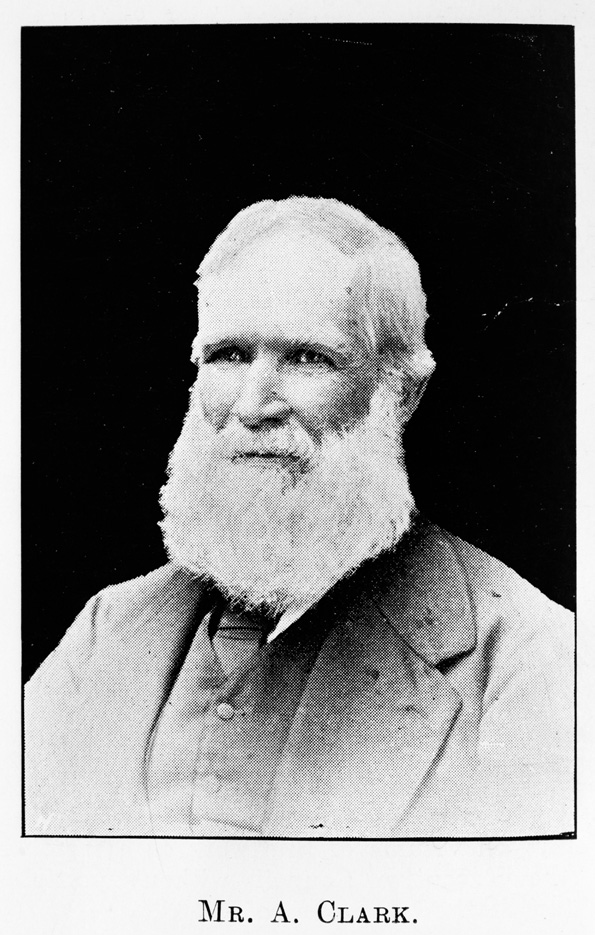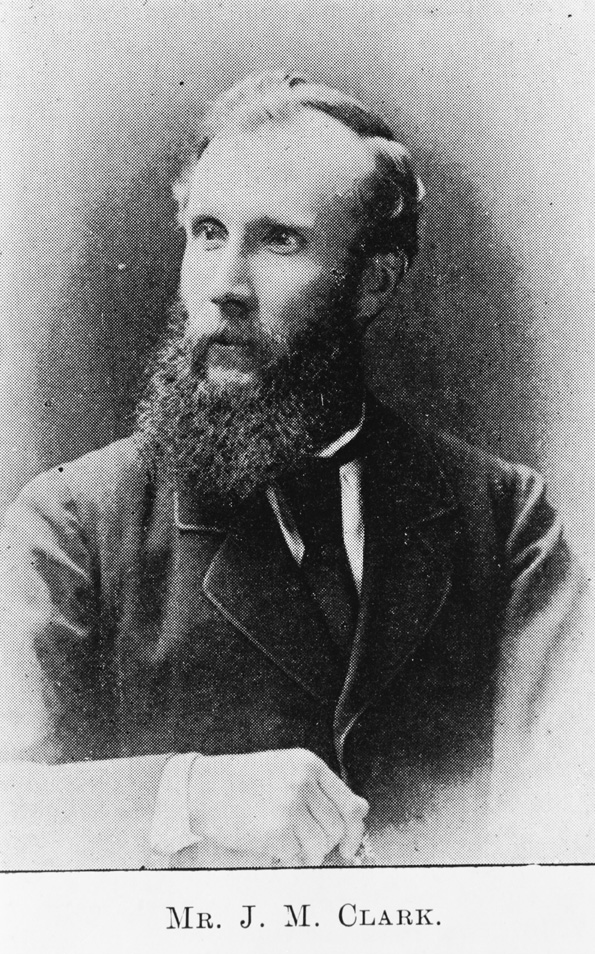Glenholm, 37 Portland Road, Remuera

Plan showing the Ohinerau (II) block, comprising 50 acres of land between Tamaki (Remuera) Road and the Ohinerau stream. This land was acquired by the Crown in 1853 and was available for sale the following year (taken from J. H. Rose, Some Houses in Ohinerau, n.d. 29).
The land upon which Glenholm was built originally formed part of the Ōhinerau block II. First auctioned in the 1850s, the block comprised some of the most valuable land in Remuera with its scenery and relatively close proximity to town making it an ideal location for Auckland’s most prosperous individuals and families.
Archibald Clark (1805-1875) and his family were one such example. A successful entrepreneur, establishing the thriving business of Archibald Clark and Son(s), Clark was one of the earliest and most prominent merchants to purchase land in Remuera during the 1850s and 1860s. Between 1851-2, he became the first Mayor of Auckland, a position that was later taken up by his son, James McCosh Clark (1833-1898), who became prominent in the civic and commercial life of mid to late-nineteenth century Auckland. Over the subsequent decades, Archibald Clark and his three sons collectively acquired over 30 acres of land along Remuera and Portland roads. During this period of economic buoyancy, the family’s landholdings were so extensive that Portland Road was originally named Clark’s Road.
In 1867, James Clark gifted one of his allotments (Allotment 31) to his sister, Margaret Stevenson (nee. Clark). Margaret was married to James Young Stevenson, a distant relative of renown Scottish writer Robert Louis Stevenson. He was a partner in the family firm of Archibald Clark and Sons, managing the business while his father-in-law and brother-in-law pursued their political careers, and took an active role in the foundation of St Luke’s Church. In 1868, the Stevensons built their residence ‘Glenholm’, which would remain in the family’s ownership for over five decades.
Built on approximately nine acres of land, Glenholm was a substantial two-storey timber residence of square plan with a slate roof and wraparound verandah. The house comprised a number of large ground-floor rooms accessed via a central hallway, and seven first-floor bedrooms. Surrounding the residence was a two-acre garden, an orchard, tennis court, vinery, a large vegetable garden, an area kept in bush and another portion of land used for grazing. Outbuildings included a washhouse, L-plan stable, coach house and a number of sheds. A reflection of their social status, the Stevensons employed a number of people to assist with the running of the estate, including household servants, a coachman/groom and a gardener. They also hosted family weddings and parties, often entertaining other high society families.
On its completion, Glenholm became one of an increasing number of grand Remuera residences that were built in park-like settings and were home to some of the most influential and prosperous individuals in the country. This comparatively high number of affluent residents and substantial residential estates gave rise to Remuera being labelled an “aristocratic suburb” [2] by Brett’s Auckland Almanac in 1883. This sense of exclusivity was firmly rooted in the establishment of a number of grand houses between the 1850s and 1880s. Some of the earliest included ‘Ellerslie House’ (1853) and ‘The Tower’ (1855), built for illustrious landowners and brothers Robert and David Graham respectively, in addition to ‘Remuera Point’ (mid-1850s), ‘Charleville’ (1856), ‘Woodville’ (1856), ‘The Priory’ (1857), ‘Waimarama’ (c.1860), and ‘Oaklands’ (1860s). Each was set in extensive grounds, with ornamental gardens, orchards and stables. Following the construction of Glenholm in 1868, several other grand residences were erected. These included ‘Dunholme’ (1870s), ‘Roselle’ (1879), ‘Waitaramoa’ (c.1882), ‘Buckland House’ (1884), ‘Stradcona’ (1885), ‘The Whare’ (1886) and ‘Woodcroft’ (c.1888). Stradcona and The Whare were also built on Portland Road.
Following the deaths of J. Y. Stevenson in 1878 and Margaret Stevenson in 1910, ownership of the estate transferred from Margaret’s brothers (including James McCosh Clark) to two of her sons. In 1915, the first subdivision of the Glenholm estate took place. Subdivided into eight lots, Glenholm occupied Lot 4, which was purchased by Trade Commissioner, William Beddoe in 1920. At the end of 1924, the property was advertised for sale as a “substantial house of 11 rooms” [3] that benefitted from harbour views and park-like grounds. It was acquired by John Russell several months later, who promptly subdivided the property into a further six lots. Occupying Lot 5 of the subdivided land, Glenholm underwent its first recorded changes in 1925, which included internal alterations and the erection of a brick and asbestos garage. In 1926, plans were drawn up for the replacement of the building’s wraparound verandah with a two-storey porch, illustrating changing architectural preferences at a time when the ‘bungalow’ had supplanted the ‘villa’ as the residential style of choice.
Glenholm continued to change hands over subsequent decades. Elizabeth Moorhouse acquired the property in 1927 and sold a small portion of the south-eastern corner of the site to neighbour, Albert Whyte a year later. Between 1932 and 1949, the property was in the ownership of the friendly society, ‘Trustees for the time being of the Court City of Auckland Number 3978 Ancient Order of Foresters’ and for a short period during 1940, was advertised as the Alan Moor Resting Home.
In 1949, Glenholm was purchased by Ruby Richards and plans were submitted for the conversion of the property into flats. This approach of utilising larger homes for multiple dwellings was becoming increasingly common in the post-Second World War era, and had long been established as a popular trend in residential living. Works involved the enclosure of the two-storey porch and its incorporation into the living accommodation; the creation of new entrance doors and outdoor steps; and the removal of the internal staircase. In 1965, further alterations were undertaken to reduce the number of flats from four to three. The property was acquired by Auckland contractor, Brian O’Connor in 1978 and transferred to David Collinson and his wife, Vanessa in 1980.
Soon after their purchase of Glenholm in 1980, the Collinsons, together with their architect, developed a scheme to convert the building back into a single-family residence. The extensive proposals saw the removal of the two-storey porch and reinstatement of the front (north) entrance and wraparound verandah – a key feature of the building’s original construction; the repair and/or replacement of double-hung sash windows (by this time, those on the west elevation were multi-paned) and reinstatement of the internal staircase; the blocking up of later openings and removal of fire escape steps; the installation of French doors and the erection of a pergola. The interior was arranged to comprise four principal ground floor rooms and five first floor bedrooms. Careful attention to detail resulted in the design of the verandah and steps in a manner that, although not identical, closely reflected the building’s original construction. This ‘restoration’ was undertaken at a time when Remuera’s grand old houses were coming under increasing threat by infill development pressures, often in the guise of townhouses and apartments, which were gradually changing the face of one of Auckland’s oldest suburbs. Several of Remuera’s earliest mansions such as Charleville, The Priory, Dunholme, Waimarama, and Stradcona had by this time been demolished or destroyed by fire, while others such as The Tower, Waitaramoa, and Roselle had been incorporated into school complexes.
Further changes in the 1980s included the erection of a double garage, the installation of a swimming pool in the north-east corner of the site, and the construction of a conservatory on the east elevation. Glenholm changed hands a couple of times during the mid-1990s. In 2002, the property was purchased by John and Janet Cousins and Hamish Spencer, who went on to carry out alterations to the residence and garage over the following couple of years. In 2003, proposals were drawn up for modifications to the garage loft and a small addition to the rear (south) elevation. The following year, further proposals were developed for the erection of a new conservatory (in lieu of the existing); the extension of the verandah along the east elevation; the replacement of a window on the east and west elevations with French doors; and the renewal of part of the roof cladding and roof and first-floor ceiling timbers.
In 2008, current owners, Graham Matthews, Belinda Parkinson and Christopher Lord acquired the property. It remains in use as a single residence.
This story has been summarised from a Historic Heritage Evaluation, prepared by The Heritage Studio Limited on behalf of Auckland Council Heritage Unit. For the full history of Glenholm refer to glenholm-evaluation



